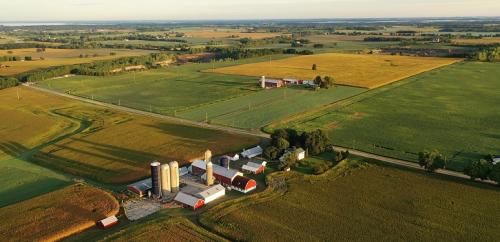The regions where miles of farmland separate neighbors, harsh terrain makes travel challenging, and important services are many hours away, a high-speed broadband network is a critical conduit to society.
The bottom line: Cable broadband providers invest billions of dollars annually to build robust networks throughout the country including some of the most remote regions in the world. And with an upcoming injection of federal infrastructure funding coming soon, public-private partnerships will further expand these important networks to unserved rural communities to connect those Americans who need it most.
Here are three ways that high-speed broadband is making an impact on rural America.
Helping a Rural South Carolina Children's Camp Thrive
Camp Cole is located 15 miles outside of Columbia, South Carolina, alongside a horse farm and pond, and provides quality outdoor learning care to children with serious illnesses and physical, mental, and emotional challenges. The high-speed broadband service provided by Charter to Camp Cole enables the staff and teachers to offer advanced medical technologies and operate in state-of-the-art facilities that make the camp experience what it is.
- When construction first started, there was no broadband available. Fortunately, Charter worked with Camp Cole to complete the new build.
- The high-speed internet service gives staff the ability to connect to campers' medical records and healthcare providers, conduct telehealth visits, or reach EMTs in emergency cases.
- "I can't imagine Camp Cole without broadband. It's essential to what we do on a daily basis," said Camp Cole Director of Operations Ken Corning.
Powering a Mission-Based Food Nonprofit in South Dakota
In Sioux Falls, South Dakota, Midco's broadband service is vital to Feeding South Dakota, whose mission is to end the hunger crisis in the state, where one in nine people face food insecurity.
- Midco's broadband service allows Feeding South Dakota to connect those in need to mobile food centers, with families receiving produce, dairy, meat, breads and other food items.
- The organization uses the high-speed internet service to operate three food distribution centers plus facilitate donor relations, volunteer coordination, and other vital operational activities.
- "For our mission to end hunger in the state of South Dakota people truly need broadband access to connect to our services and the other services they are going to need to get out of that situation, to really live up to their potential," said Feeding South Dakota CEO Lori Dykstra.
Bringing Rural Alaska Up to Speed
The Alaskan Aleutian Islands, known for where the show "The Deadliest Catch" is filmed and for being one of the most remote regions in the world, now has 2 gigabit per second internet speeds thanks to GCI's buildout efforts to turn the "Last Frontier" into the "First Frontier."
- Mayor Vincent Tutiakoff of Unalaska, whose efforts include continuing to make Unalaska a top fishing port, said the city, school system, stores, and businesses are already seeing the benefits of the high-speed service.
- When GCI's buildout started, Tutiakoff couldn't even join for video conferences to discuss the project. He could only phone in for meetings, demonstrating how transformational the connectivity is proving to be today.
- "This is a group of talented leaders and problem-solvers who are up to the challenge of connecting a state as vast and as rugged as Alaska," said GCI CEO Ron Duncan. "Though we still have a long way to go, I can tell you from first-hand experience, we’ve made great progress. We look forward to the important work ahead to connect our fellow Alaskans."
